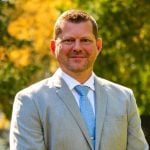Canada’s premier food processing research plant-for-hire just got a lot more sophisticated in its ability to extract protein, oil and starch from plants.
POS Plant Corp. in Saskatoon has three new high-tech extraction machines using money from the federal and Saskatchewan governments.
Robert Morgan, POS president, said research is identifying new extracts from plants that become high value components for food, nutraceuticals and cosmetics.
“That’s what more and more of our business is about. Having this new type of equipment allows us to move into that area,” he said.
Read Also

Saskatchewan throne speech promises strong economy
Saskatchewan’s legislative agenda for the coming year will focus on meeting the challenges of new world trading relationships, said the speech from the throne.
The three machines are a centrifugal partitioning chromatography system, a Littleford vacuum reactor-dryer and a Millipore ultrafiltration unit.
The centrifuge system can separate components from plant extracts for use in nutraceuticals, cosmetics and pharmaceuticals. The system will be the only one available in North America that can be contracted.
The Littleford unit can gently dry and remove the solvents in materials that have been extracted using a solvent process. It can dry material in a vacuum so it doesn’t oxidize in the air.
The Millipore unit’s membrane filtration technology allows the separation of materials based on molecular size and shape.
The equipment, which is installed and operating, was bought with the help of $1.3 million from the Canada-Saskatchewan Agri-Food Innovation Fund. Saskatchewan Economic and Co-operative Development provided $465,000 to allow POS to upgrade its plant to new standards.
POS, whose name stands for protein, oil and starch, has a host of food processing equipment and a team of technicians. It can be hired to do research and development work in processing plants, fish and forest products. It can also act as a pilot plant producing products to assist in market development.
Morgan said the fees it charges to customers help pay for regular maintenance of the plant’s equipment.
“But when we start to look at new equipment, you are looking at hundreds of thousands of dollars.”
While the organization is shifting to operate more like a business and to self-finance new equipment, “we can’t do it all. Some of this equipment is so expensive. We can’t have a fee structure so high that it would discourage people from coming.”















